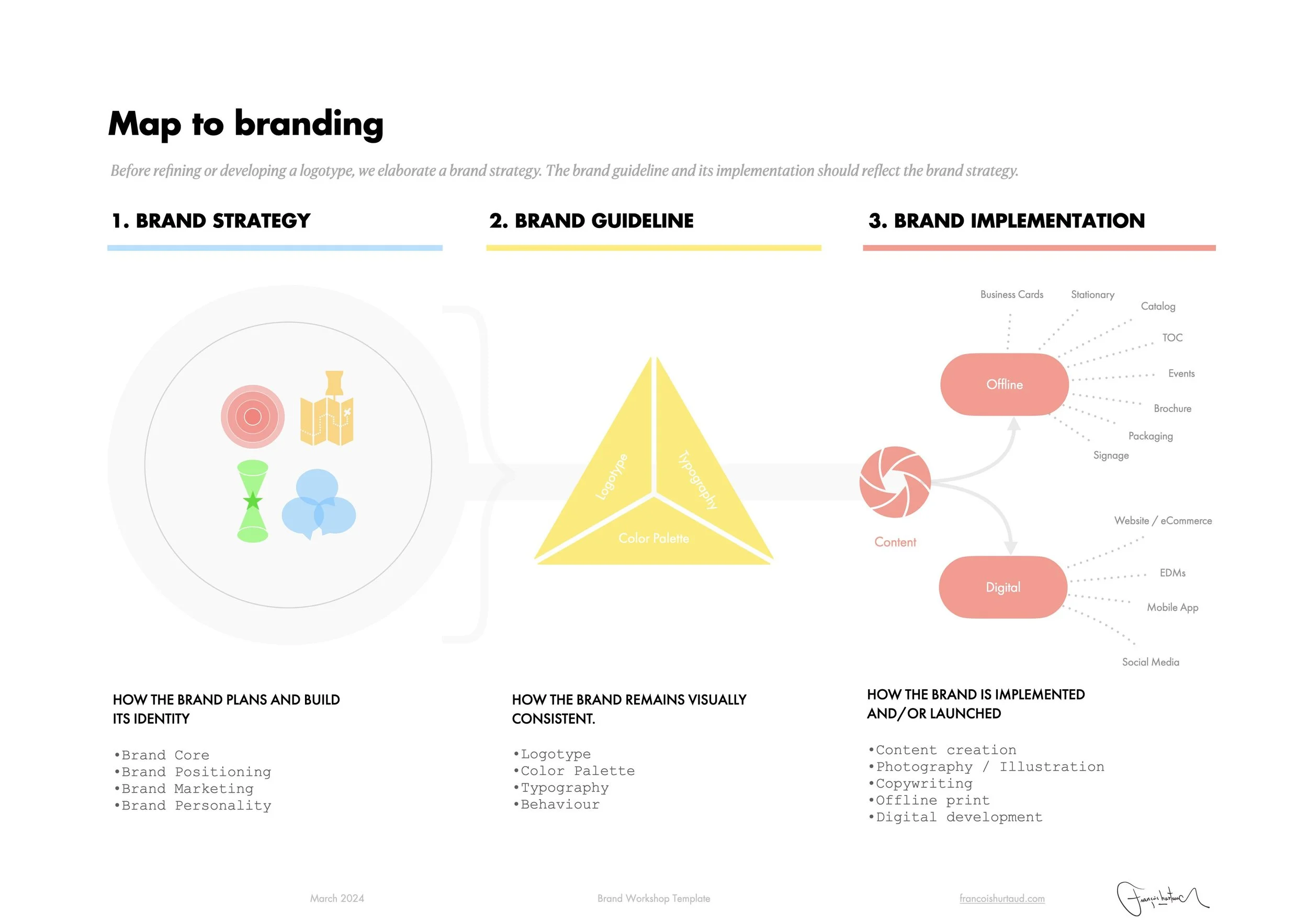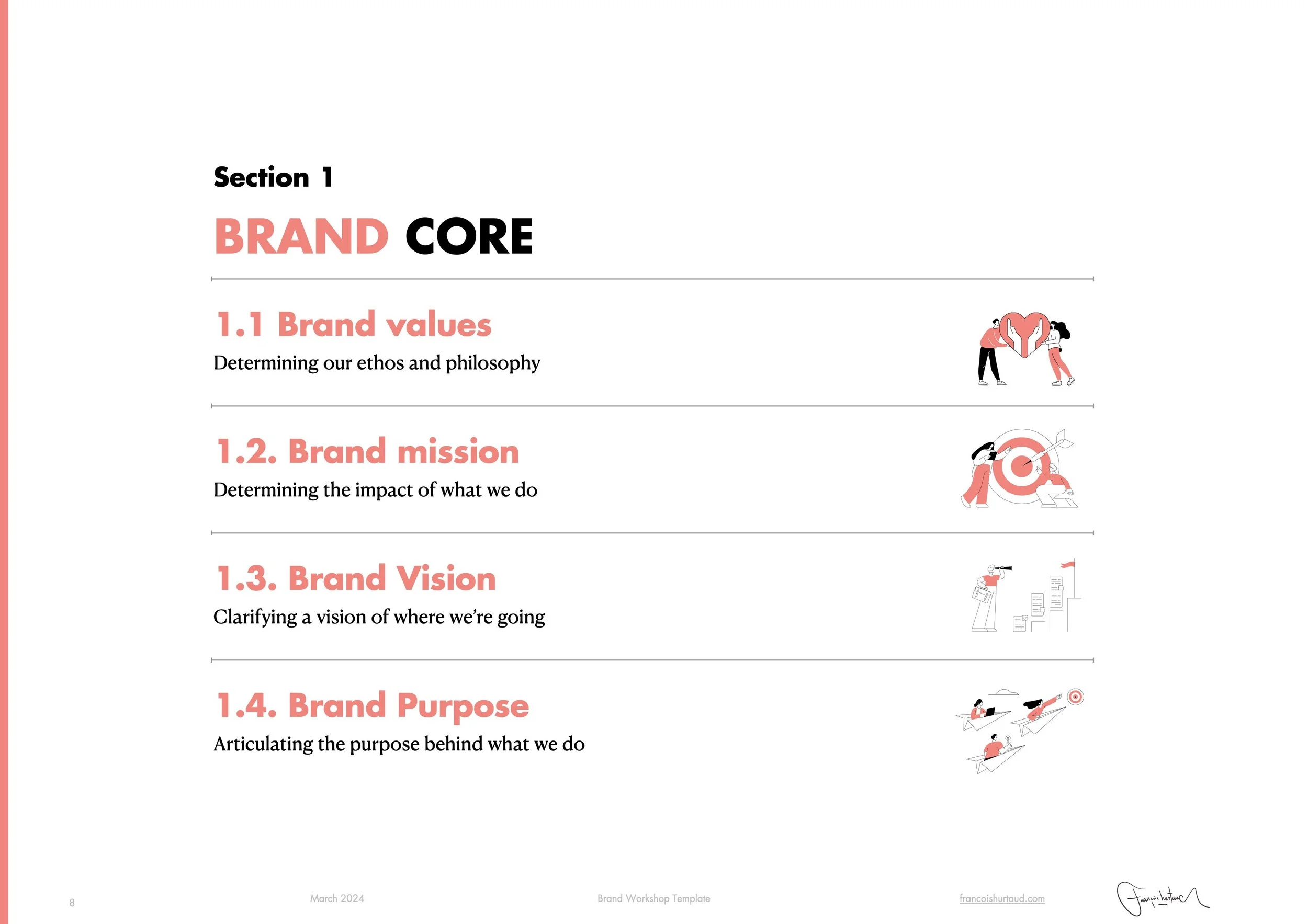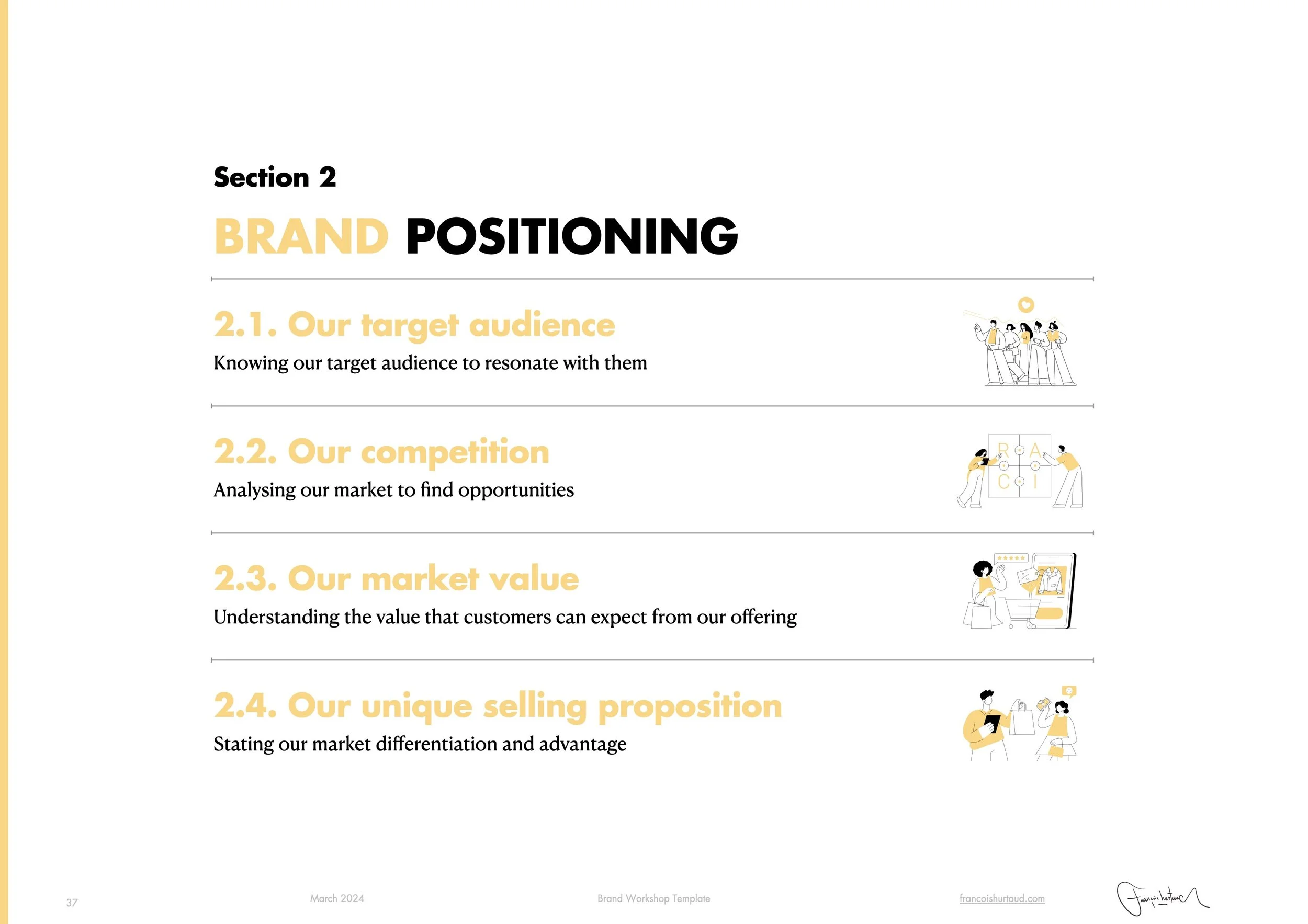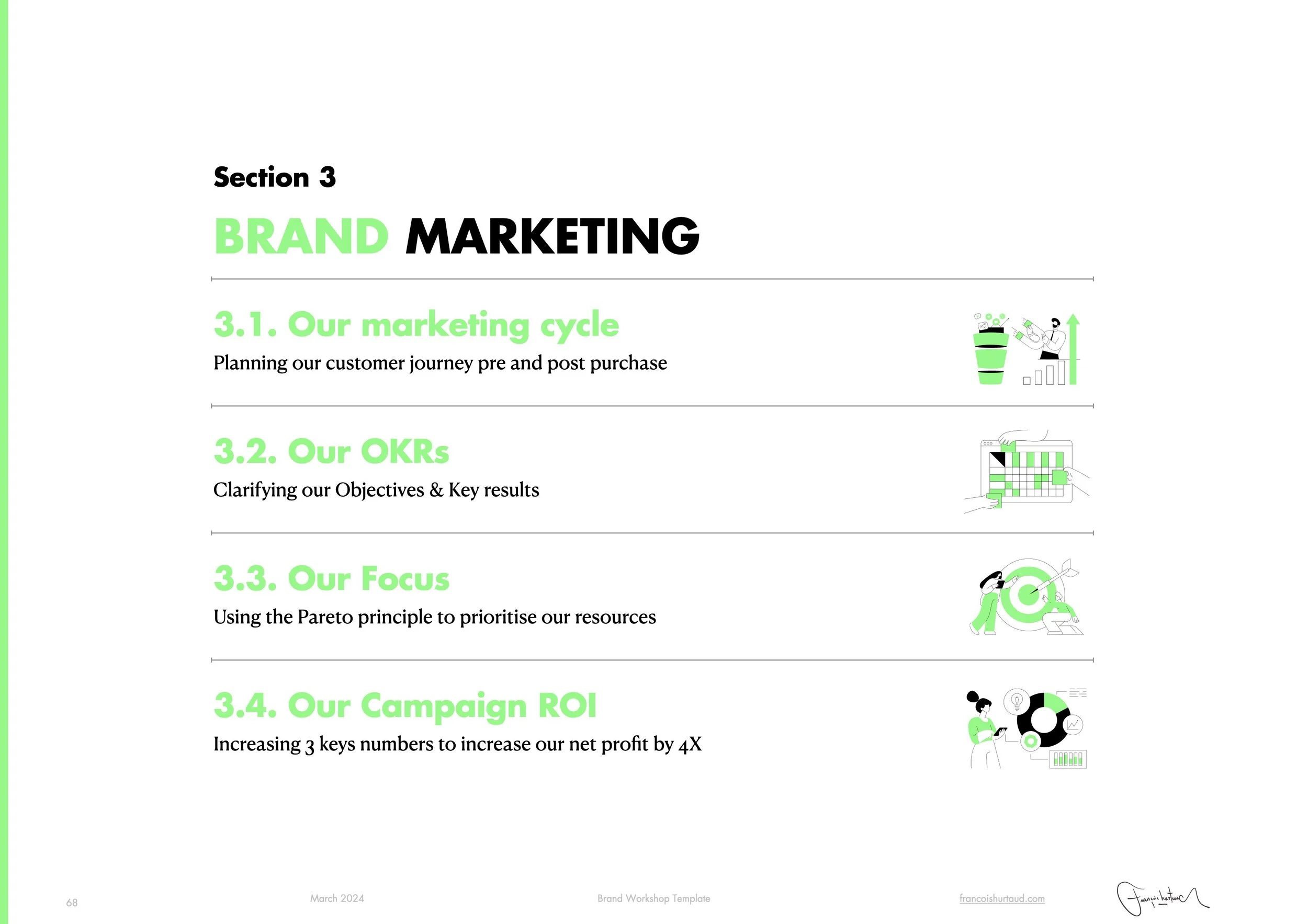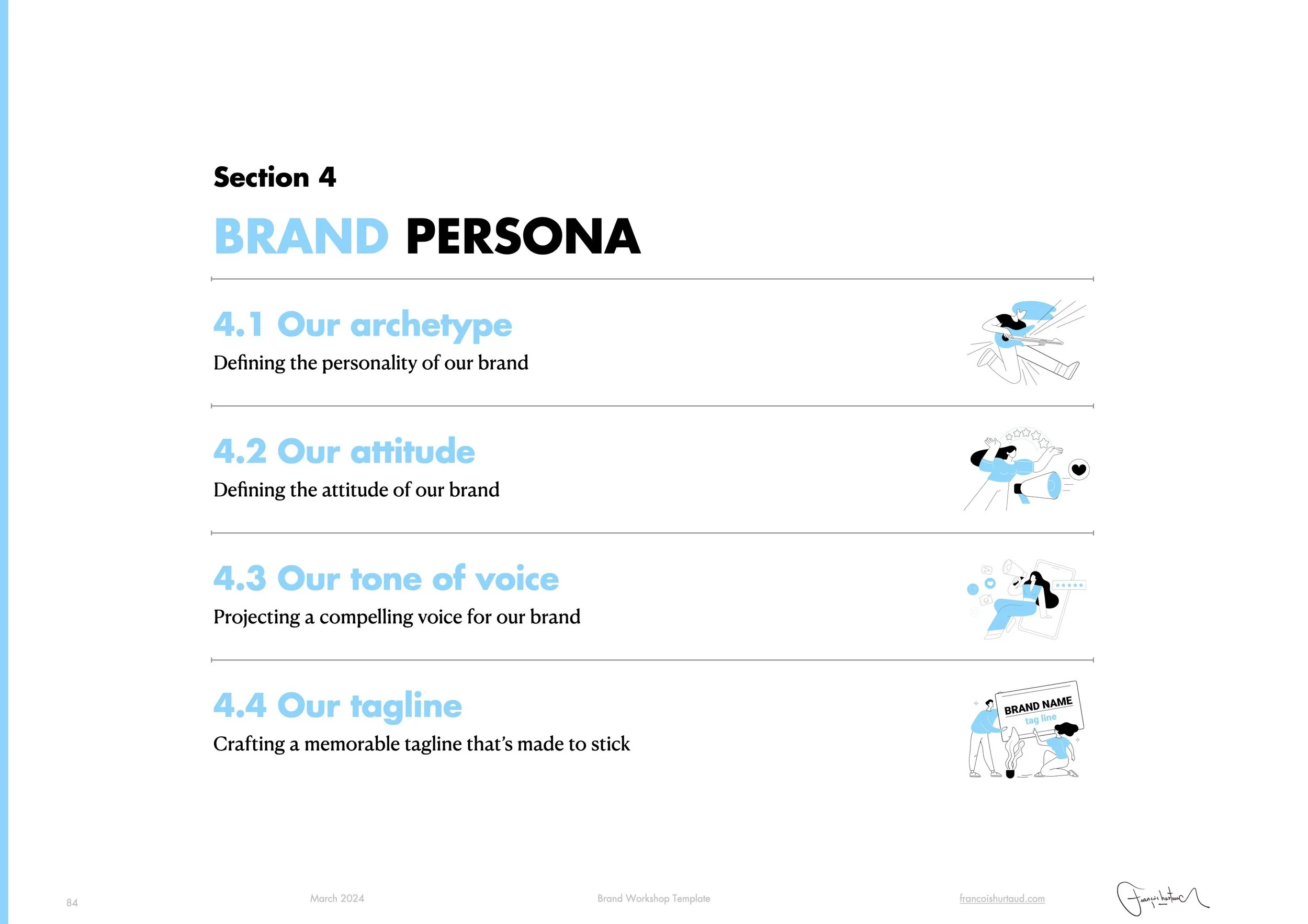The Ultimate Guide to Brand Strategy for Start-ups and SMEs
Over the past decade, I have designed countless logos. Some of which I am proud of and some of them I wouldn’t dare to publish. The difference between the former and the latter has been in the ability to control the outcome. I have been through three main stages in designing graphic identities, it went like this:
It’s the early days of your design career. You have this brief for this new cool project. You can’t explain it but you have a good feel, a professional intuition of what the logo should look like, or at the very least, a pretty confident idea of the direction it should follow. Excited, you start to design and come up with one or two versions. They’re sleek and the client will love them pick one, thank you and pay you the very same day. Sounds too great to be true? Yes, because it is. In reality, you are just entering an endless spiral of revisions with the client more or less directing your mouse on Illustrator until she is satisfied. You know the result is so-so, you spent so much time iterating you’re not profitable.
This will not happen again. You decide to come up with a plan. Before jumping the gun and opening Illustrator, you now want to have the client select a clear direction or concept to develop. This time the client has the choice for her hair salon logotype: a pair of scissors, a funky hairstyle, or a cool hairbrush. After some thinking and pondering, the pair of scissors is the graphic element of choice. That’s great we have an understanding of the direction to pursue, you start sketching, refining, and iterating. The final deliverable is gorgeous, you’re happy. Expect, after a second thought (or after having shown the logotype to friends and family), the funky haircut concept is deemed to have been a better, more suitable direction. After all, it would reflect the client’s and founder’s warm character. We’re back to square one.
This will not happen again. But how? I realized that a lot of questions were redundant during the creative logotype process. For some of my client, the logo should reflect their characters, for some it had to speak to their audience, or for others to be similar to the competition. This is when I started to develop a small workshop to run with my clients before starting any graphic identity or creative work. A few years ago, it consisted of a couple of exercises on brand values or brand vision, it evolved slowly as I was getting feedback and reading books. From a simple questionnaire, it became a comprehansive brand strategy sprint that span accross a week.
Today, I would like to share the backbone of this workshop with you so you can run your own brand strategy sprint to build or review the foundation for a strong and successful brand strategy.
What is Strategy and Why it’s Important?
When I was a kid, one of my favorite series was The A-Team. I’ll try to summarize 99% of the episodes for those of you who have never watched them: Bad guys bully and threaten a good guy or a group of good guys, the good guys then beg the A-Team for help before the Agency goes into battle, humiliates and hunts down the bad guys. The episodes repeatedly end with a close-up of Hannibal, the mastermind of the Agency, chomping on his cigar while triumphantly muttering, "I love it when a plan comes together”.
Look at any profession facing big challenges and you will see that there is always a well-crafted plan. Because professionals don't improvise: doctors follow a treatment protocol, airlines pilots respect their flight plan, the military acts according to a road map.
You probably wouldn't want to be on board a plane whose pilot doesn't have a flight plan. How would you feel if you hired one of these professionals and they told you outright: “To hell with procedures and plans, I'm going to improvise”? But that’s what most small business owners do.
When a professional botches an assignment, it regularly becomes clear after the fact that they didn't have a plan. Don’t be that professional, don’t put your business through this. While no one can guarantee you success, a good plan can greatly increase your chances of success. It's not just your ego that is at stake. So it's time to go into "pro" mode and develop a plan for developing your business.
Strategy vs. tactical
Understanding the difference between strategy and tactics is essential to successful marketing. Strategy is the big picture, the planning to be done before even thinking tactically. Imagine: you bought a piece of virgin land and you want to build a house on it. Would you just order bricks before diving headlong into masonry? No. Otherwise you would end up with a flimsy house.
What to do then? You first hire the services of an architect or building contractor, who takes care of everything from building permits to choosing your favorite taps. Everything is planned in advance even before the first shovel is broken. That's the strategy.
Once the strategy is in place, you know how many bricks you will need, where the foundations will be and what type of roof you will have. You can now choose your mason, your carpenter, the plumber, the electrician,... That is the tactic.
You won't do anything good if you don't connect strategy and tactics. Strategy without tactics paralyzes at the analysis stage. Regardless of the qualities of the contractor or architect, the house will not build itself if no one starts laying the bricks. At some point, the contractor or architect will say, “Okay. Now that the project is validated and we have all the authorizations, we can begin! »
As for tactics without strategy, it leads to the “all that glitters is not gold” syndrome. Imagine: you started building a wall without any plan and suddenly realize that it is not in the right place; you then move on to the foundations, which you pour, until you realize that they are not proportionate to the house to be built; so you start digging for the swimming pool, but here too you are wrong. Clearly, nothing is working as it should. Yet this is how most business owners “build” their companies. They put random tactics together in the hope that it will lead them to a client. They set up a website without thinking about it and end up with an online version of their brochure, or go on social media because they heard it was trendy, etc.
So to be successful, you need both a strategy and a tactic, and the strategy must precede the tactics. This is where your strategy comes into play.
Who is this Branding guide for?
For Entrepreneurs
Run this workshop with your close partners to align on a strong and powerful branding, step-by-step.
For Freelance Designers
Run this workshop before starting any logotype work, saving you hours of back-and-forth communication and misunderstanding with your clients.
For In-house Marketing Directors
Run this workshop with your team on your current or next branding projects. Tip: review and rerun it yearly.
For Marketing Students
Run this workshop with you classmates or on your own for your next project, saving you hours of research.
The 4x4 Step Brand Strategy Framework
Brand Value
Brand Mission
Brand Vision
Brand Purpose
Our Target Audience
Our Competition
Our Market Value
Our Unique Selling Point
Our Marketing Cycle
Our OKRs
Our Pareto Focus
Our Campaign ROI
Our Archetype
Our Attitude
Our Tone of Voice
Our Tagline
The Brand Strategy Worksheet
This worksheet is the ultimate one-pager that consolidates the strategy. It is the result of the brand sprint, each box represents the outcome of an exercise. If there is one page to frame above your desk, this is it.
How to run a Brand Strategy Workshop?
What makes a good brand strategy sprint ?
Collaboration is key. Gather the stakeholders together. Participants must be the stakeholders or as close to them as possible. We had workshops where junior executives participated instead of their subordinates, which led to a poor outcome since we could not develop a solid understanding of their motivations, vision, market solutions.
Team size and skills
The team size varies and is dependent on the company’s challenge and the available resources. It should have three to seven members max. In our experience, five people are ideal. With team sizes over ten people, coordination becomes more complex and effectiveness dwindles.
What should the space offer?
The space in which we animate the brand strategy sprint has an impact on the team dynamics, the results, and on the joy in working. We have implemented brand workshops in a wide variety of locations and came to the conclusion that design thinking works best in a place where people feel comfortable.
(I) Brand Core
We start with who we are as company, our core. In this section of our brand strategy, there are four key elements that play vital roles in defining our internal brand. Understanding these elements clearly not only instills confidence in the direction of our brand, but also addresses the changing expectations of consumers. Since the early 2000s, customers seek genuine and authentic brands to engage with. Therefore, in order to build such a brand, it is crucial to have a strong understanding of your values and effectively communicate them to the external world. As customers, we want brands we do business with to have a strong core, so that they're more than just salespeople.
1.1 Brand Values
Our values are basically our philosophy and business ethos. Our values are non-negociable. They stand at the core of our business, they are reflected in our products and services. Our values determine how will we be perceived in the markets. To an extend, our values are sensed by our customers, suppliers and wider public in general by the experience they have with our brand.
1.2 Brand Mission
Some strategic plans contain a purpose statement instead of or in addition to a mission statement. This can cause some confusion during strategy days and also for employees seeking to execute on the strategic plan. If you are starting with a blank sheet, planning our future strategy, it can be even harder not to confuse mission and purpose. We can be clear here, you do not need both. Either one is necessary.
A purpose statement provides the reason or reasons you exist. It is about why you exist, whereas the mission is about what you do and for whom. A brand mission can be written for a goal to attain or maintain, whereas a purpose statement is and should be utopia.
1.3 Brand Vision
A vision statement describes what an organisation aspires be. It also serves as a guide for everyone within the organization as they strive towards achieving this goal. In 1962, when J.F. Kennedy visited NASA, a janitor said, “I’m helping put a man on the moon.” That organizational vision was realized in 1968.
1.4 Brand Purpose
A purpose statement provides the reason or reasons you exist. It is about why you exist, whereas the mission is about what you do and for whom. This distinction is often difficult to extract from strategic plans. Here, we tackle what is the greater good behind our product and services. Our purpose is a higher order reason for a brand to exist, beside making a profit.
When we align our brand to a cause, we have an uncanny ability to attract a cutline following. Here, our goal is to give our existing and potential customers a cause to champion, or a reason to believe so that they feel inspired to come to work or to buy from us. A brand purpose do both: unite a team internally and also externally foster a deeper connection with our audience. More an more people are willing to pay a premium for ethical and social brands.
(II) Brand Positioning
Now that we have defined our brand internally, and know confidently who we are, we can look outwards and try position ourselves on the market. In this section, we will be looking at who is our actual clientele, where do they go to solve their problems or desires and understand our competitive edge relative to the competition. Once we clarify our targeted audience, where we sit on the competitive market and what is our unique value proposition, we unlock the potential to explore new opportunities or capitalize on existing ones.
Positioning hinges on perception. The manner in which we portray ourselves influences how our brand will be remembered. While our positioning originates from our product range or services, we don’t necessarily need not be pioneer in a particular field. Positioning is not an action we take for a product or service but rather a mental process that occurs within the minds of our potential or current audience. Even if we provide a similar offering, we can, must position ourselves separately.
2.1 Target Audience
To resonate with our potential or exciting customers, we need to understanding who they really are. We can then tailor our messaging and offerings to resonate with their preferences, needs, and values. We delve deep into who our audience is, including their demographics, psychographics, behaviors, and preferences to ensure that we are building a meaningful relationship with the people most likely to become loyal customers.
2.2 Competition analysis
Here we want to look for gap in the market we’re in in order to find our differentiation. How can we uniquely position our brand? Rather than introducing something entirely new, our strategy involves leveraging existing perceptions of our target audience. We see many business owners drawing inspiration from competitors, mimicking if not copying elements from their branding, website, services, and tone of communication. Our objective is not to imitate but to carve out a distinct identity for ourselves.
2.3 Market Value
Here we try to clarify how our product or service solves our customer's problem, delivers specific benefits, and/or improves our customer's situation. We state a promise of value to be delivered, which differentiates our brand from our competitors. By determining the market value of our product or services helps us to refine our positioning in the market and set an appropriate price that aligns with consumer expectations. Market value reflects how much consumers are willing to pay for a product.
2.4 Unique Selling Point
A unique selling point, or USP, is a specific aspect or feature of a product or service that sets it apart from competitors in the eyes of consumers. Here, we clearly state what differentiates our business offering from others in the market and provides a compelling reason for customers to choose it over alternatives. We highlight what makes our product or service unique and appealing to customers compared to similar offerings. The USP becomes the why they should choose us over them.
(III) Brand Marketing
At that point, we know who we are as a brand, where we stand in the market and who we are talking to. In this section we look at how we approach the audience we defined above for the very first time, pamper our existing ones and improve our marketing campaigns for optimum return on investment.
In those four exercises, we outline an overview of the commercial strategy. This strategy is designed to introduce ourselves to potential customers and to endear us to our target audience, fostering enough trust to convert them into loyal customers.
3.1 Marketing Cycle
Our marketing cycle is like a great journey throughout which we want to guide our target customers defined above. We want to take them from complete ignorance of our company to complete adoption of our products or services, until they become die-hard fans of our brand. For this, we will need to lead them through six distinct phases divided into two distinct blocks: before and after the sale, commonly named front-end marketing and back-end marketing. Here, we identify three marketing actions for every of those six stages.
3.2 Objectives and Key Results
Now that we know what marketing actions we will develop, we need to a clear and focused plan to implement those projects. Here comes our objectives and key results (OKRs) relative to this projects. By setting clear objectives and measurable results, OKRs provide a concise roadmap for our team, ensuring everyone is moving in the right direction. We do not only set ambitious goals but also drive focused execution towards achieving them.
3.3 Marketing Focus
Next, we look at marketing date or sales data that we have on hand to apply the Pareto principle. For instance, by focusing on the vital 20% that brings 80% of our business's value, we can streamline our marketing efforts and maximize our impact. This is done case by case as different numbers bring different output. Here for example, we can analyze our product/service and strategically focus on the essential aspects that differentiate our business and resonate with our consumers. The Pareto approach ensures that our marketing efforts are optimized to attract and retain customers.
3.4 Campaign Return on Investment
Here, we see how just a 10% improvement in three key numbers can increase our net profit by 431%. “What can be measured can be managed. » Marketing is a game where we have to constantly measure, manage and improve our numbers. Because the numbers tell us everything. Doctors only needs a few key numbers to know your health, accountants only needs a few key figures to know the state of your business. The same goes for our marketing. We need to know and constantly improve our numbers.
(IV) Brand Persona
In the last section, we focus on developing our brand persona together. In the eighties, brand communications were one-way through traditional ads but in today's digital era, customers enjoy a stronger voice, especially through social media. They expect brands to engage with them personally, like a trusted friend rather than a faceless entity.
Here, our aim is to build this genuine connection with our audience by crafting a relatable brand persona. It involves defining our brand's unique personality, selecting our right tone and attitude, and creating a memorable tagline that captures our brand essence. Those exercises help us establish trust and fosters meaningful relationships with your customers.
4.1 Our archetype
Here, we'll humanize our brand by showing its personality to connect with customers. We'll define its character using archetypes, which are basic models of behaviors or personalities. Archetypes, a concept by Carl Jung, are natural inclinations affecting how people behave. They are commonly seen in books, movies, and branding.
4.2 Our attitude
Having our archetype in mind, we now think of its attitude What would that archetype do in that kind of situation? A brand is what we do but equally what we don’t. Our brand behaves a certain way, here we look at what we love and why, what we dislike and why. This allow us to form our brand attitude and express our personality in simple messaging.
4.3 Out tone of voice
How do we want to sound to others? Here, we clarify how we project a compelling voice for our brand. We try to define our tone of voices according to the targeted demographics we defined earlier.
4.4 Our tagline
For the last exercise, we craft a memorable tagline by distilling our message into concise and memorable words. Here, we define what we want our audience to remember us for through a tagline that is easy to recall and captures our brand essence.
What’s next
Download a sample of the Brand Strategy Workshop Template
Purchase the Complete Brand Strategy Workshop Template
Hire us to run the Brand Strategy workshop with you
If you are an entrepreneur, a project manager, a CEO or a founder looking at developing or consolidating your strategy and identity, book us for a four-day workshop.


